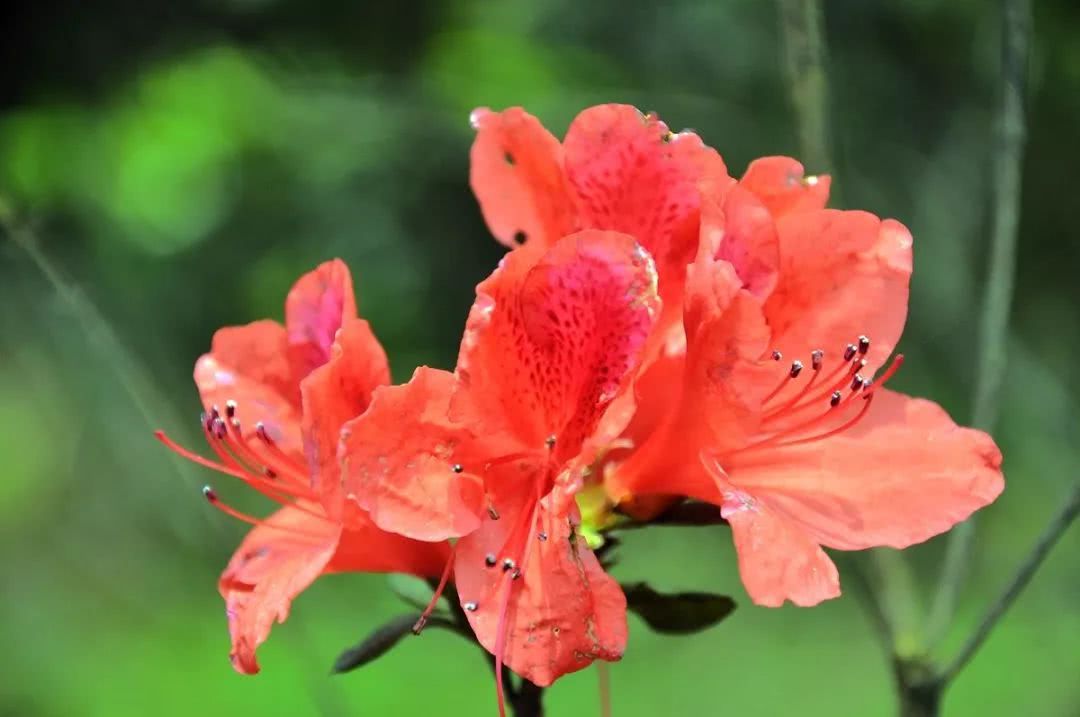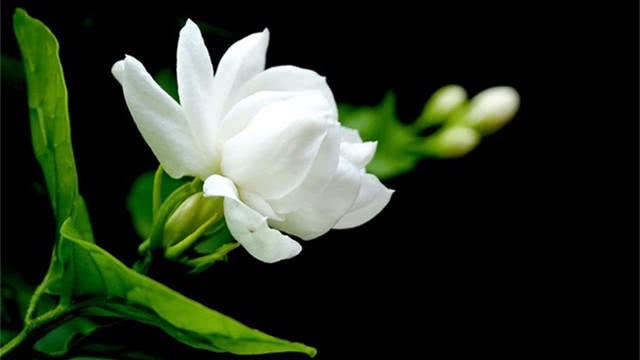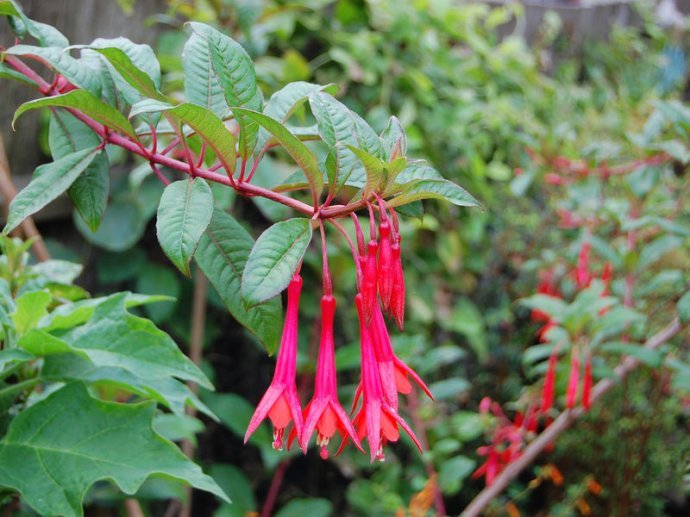Culture methods and matters needing attention of Rhododendron in Belgium

Belgian rhododendron is a hybrid variety of rhododendron. Its ornamental value is generally around the Spring Festival. Belgian rhododendrons are generally adopted to control the flowering period manually. Belgian rhododendrons like warm and humid environment, not resistant to cold and afraid of heat. Today, the seedling net will introduce to you the main points of Belgian rhododendron culture:
I. Propagation methods
1. Cutting
The cutting time of Belgian rhododendron is from May to June, it is better to choose semi-mature shoots, the cuttings are 12-15 cm long, remove 2-3 leaves at the base, leave the top leaves and cut off half of them, and insert them in the cutting bed filled with rotten leaf soil or river sand. the depth of cutting is half of that of cuttings, compacted after cutting, maintain humidity, heal in about 40 ~ 50 days, and gradually take root in 60 ~ 70 days. If the cuttings were dipped in 0.2% indolebutyric acid solution for 1 to 2 seconds, the rooting rate could be increased.
2. Pressing strip
It was carried out from April to May, using the high-altitude strip method. Select 2 ~ 3 years to produce mature branches, peel the ring with a sharp knife 15 cm away from the top, 1.5 cm wide, wrap it with plastic film, fill it with moss or rotten leaf soil, and keep it moist. It takes about 4 to 5 months to heal and take root, and the root system can be directly potted when cut off.
3. Grafting
It is better to take the plum rain season, the 2-year-old rhododendron is often used as the rootstock, and the buds of Belgian rhododendron which grow well and germinate in the same year should be used as the scion. Mainly branch grafting, incision length 3 cm, take scion 8 cm 10 cm, leave top 2 leaves, and cut off half, cut into wedge, length 3 cm, insert rootstock, bind and moisturize, heal after 50 days, the survival rate is high.
4. Sowing and reproduction
The sowing time of Belgian rhododendron is in April, the seed is small, the sowing soil needs to be sterilized, and the suitable temperature for germination is 22 ~ 24 ℃. After sowing, there is no need to cover the soil, just a little pressure. The seedlings germinated in about 10-15 days, and the seedlings grew slowly. When the seedlings had 2 true leaves, the seedlings were transplanted in 4 cm pots, and it took 4-5 years for the seedlings to blossom.
2. Culture methods
1. Rational fertilization
Belgian rhododendron seedlings were applied with 0.1% 0.2% foliar fertilizer solution for about 20 days, and the amount of fertilizer should be appropriately increased one month before flowering, mainly 0.2% available phosphorus and potassium fertilizer, once every 10 days, in order to prevent excessive growth and promote the flowers to be big and bright. Stop fertilizing during flowering to avoid promoting new shoots and being unfavorable to flowering. Pay attention to fertilization should not be too thick and excessive, so as to avoid fertilizer damage.
2. Summer management
The Belgian cuckoo likes a cool and humid climate. In summer and autumn, it should be placed in a cool and ventilated place, and water should be sprayed on and around the branches and leaves. It can also be put on a shallow plate, and the flowerpot can be placed on the plate to allow the flowers to absorb water slowly from the bottom of the shallow plate. Therefore, the cultivation site should be selected in the south-facing ventilation, semi-shade or sunlight scattering place, can also be covered with 60% sunshade net, especially in summer, to achieve ventilation, moisture, sun protection.
3. Soil disinfection
The growth of Belgian rhododendron requires not only loose and acidic soil, but also strict soil environmental conditions. During soil preparation, 1.5 jin of carbofuran per mu and potassium permanganate solution diluted 1000 times per mu were used for soil disinfection to control tigers, crickets, zoysia and diseases, and pot soil could be fumigated with steam or disinfected with potassium permanganate before planting, so that the soil could meet the requirements of cleanliness, hygiene and free of diseases and insect pests.
4. Fertilizer and water management
Belgian rhododendron grows fast, has many branches and leaves, has a long growth period, and needs plenty of fertilizer and water. According to its fine fibrous root, foliar fertilizer is the main fertilizer, supplemented by peanut bran as the base fertilizer. At present, there are mainly Ye Mianbao and Gaochengling on the market, which can be used alternately. Do thin application, generally fertilize once a week, spray bacteria twice a month, and combine sterilization when applying foliar fertilizer. At the same time, depending on the greenness of the leaves, 5% ferrous sulfate is sprayed to supplement acid. Water conditions are also very important for its growth, except in rainy days, generally planting seedlings are drenched with water every two days, potted seedlings are drenched once a day, and indoor furnishings are not dry and drenched.
5. Pruning and shaping and florescence control
The crown pruning of Belgian rhododendron was combined with cutting cuttings and florescence control. Pruning and shaping is through pruning, budding, erasing flower buds, supporting the crown into a mushroom shape, and cutting the branches suitable for cuttings into cuttings in time.
It takes 180 days for Belgian rhododendron to transplant from surviving seedlings to flowering at normal temperature, and it also blossoms again after flower fade or artificial erasure of flower buds, so repeatedly, the removal or retention of flower buds is determined according to the different time on the market, so as to control the florescence. Bulk trafficking should be listed in packaging and transportation 20-30 days before flowering. If it is decided to go public on National Day, the flower buds and flowers will be removed at the end of March, and the whole tree will bloom at the same time by the end of September.
Matters needing attention
1. Insect pests
Red spiders are more common, which are caused by dry heat. They suck leaf sap, causing the whole plant to slowly wilt. Check the back of the leaves regularly every day; if you find some reddish brown spots like "Zizai", they are red spiders and spider silk.
We should first isolate the Belgian rhododendron and wash the insect-infested leaf back through the glue throat with more intense water. After a little dry, you can use oleander fresh leaves more than a dozen pieces, plus cigarette butts (only take tobacco) five (about the weight of a cigarette) and a chopped raw red pepper, soak in 500ml for 24 hours, spray stems and leaves every three days, and dry in a ventilated place for three times. Keep moist and well ventilated every day.
2. The leaves are yellowing
This is a physiological disease, which is caused by lack of iron, trace elements and excessive alkalinity of soil. All azaleas like slightly acidic soil, should be loose drainage, do not harden.
In serious cases, the soil should be changed and mixed with packaging "basin soil", peat soil and black mud (humus soil). Light people can bury several rusty iron nails in the mud.
3. The buds withered early
The tips and edges of Belgian rhododendron leaves also wrinkle and turn yellowish brown at the same time. This is due to the application of thick fertilizer when there are buds, or hot baking is not ventilated, or too dry, soil cementation. Should stop fertilizer when budding, put cool air circulation place, only need enough scattered light, avoid the scorching sun; basin soil should be properly moisturized, do not dry, flowers lag behind to change soil once a year. The injured buds and leaves should be removed.
4. There are brown spots on the edge of the leaf.
This is the main disease of Belgian rhododendron, known as brown spot, which is caused by lack of light and heat. Diseased leaves should be removed and six hundred times of Dasheng liquid should be sprayed once a week for three times.
- Prev

Want to prolong the florescence of jasmine? Then try these tricks. The fragrance of flowers is all over the house.
In order to prolong the flowering period of jasmine, we should strengthen the management of water and fertilizer and apply thin fertilizer frequently during the period of full bloom. And give it enough sunlight, you can put it on the balcony for maintenance. It is also necessary to prune the residual flowers and delicate branches in time during the flowering period, and in its new.
- Next

What if the leaves of the golden bell turn yellow when the weather is too hot? As long as you don't touch these.
The summer weather is hot, it is normal for the leaves of the golden bell to wither and turn yellow, only take good care of them, and when the summer is over, it will take on a new look. But when the nursing method is not right, things may be counterproductive, then.
Related
- Wuhan Hospital Iron Tree Blooming Result Was Instantly Frightened by the Gardener Master
- Which variety of camellia is the most fragrant and best? Which one do you like best?
- What is the small blue coat, the breeding methods and matters needing attention of the succulent plant
- Dormancy time and maintenance management of succulent plants during dormancy
- Minas succulent how to raise, Minas succulent plant pictures
- What are the varieties of winter succulent plants
- How to raise succulent plants in twelve rolls? let's take a look at some experience of breeding twelve rolls.
- Attention should be paid to water control for succulent plants during dormant period (winter and summer)
- Watering experience of twelve rolls of succulent plants
- Techniques for fertilizing succulent plants. An article will let you know how to fertilize succulent plants.

